[Esp/Eng] Batalla de Stalingrado "La batalla más mortífera" / Battle of Stalingrad "The deadliest battle"
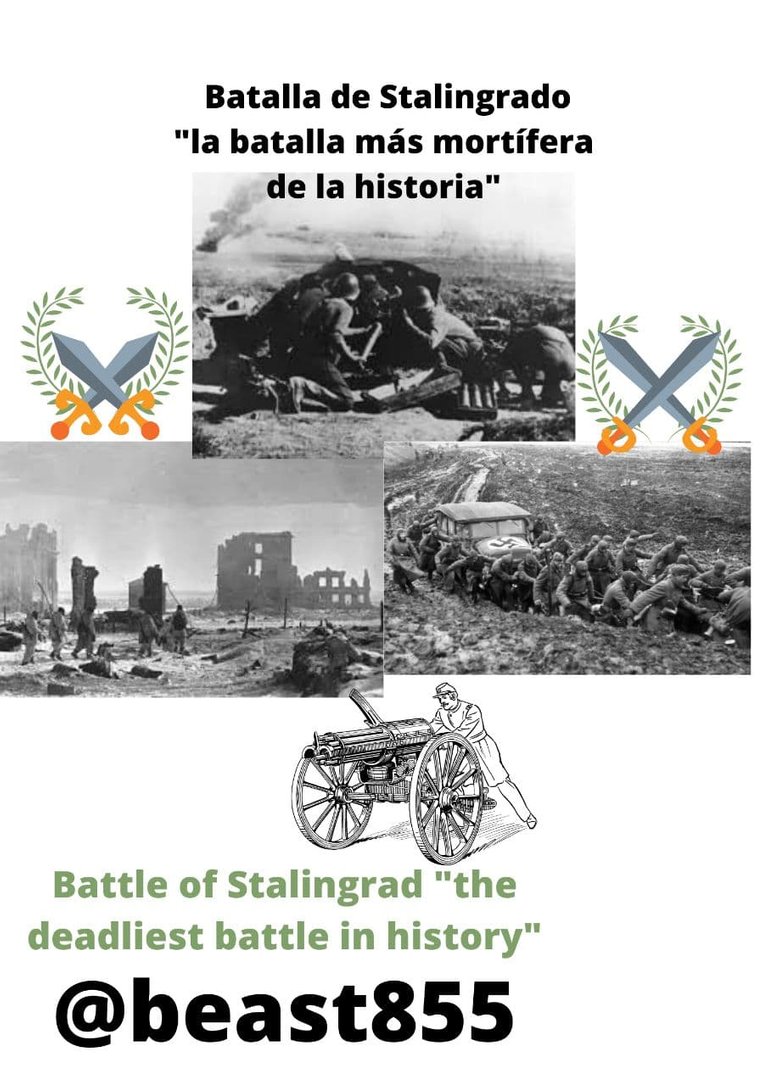
Diseño realizado por @sarix en Canva

Bienvenid@
Buenos días , tardes o noches querid@ historiador(a), espero que te encuentres de maravilla por que te contaré una historia de una batalla que cobró la mayor cantidad de vidas de toda la segunda guerra mundial , sin más dilación comencemos:
Batalla de Stalingrado
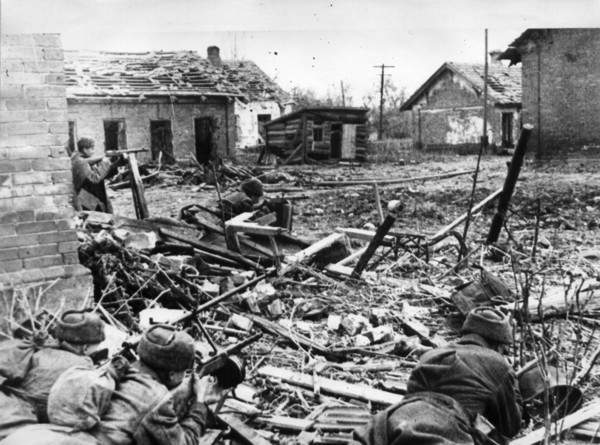
La batalla de Stalingrado se daría inicio el 23 de agosto de 1942 y finalizaría el 2 de febrero de 1943, fue una de las batallas que se llevó a cabo con la Operación Barba Roja , que sería para conquistar el territorio de la URSS.
El descomunal despliegue de tropas del 6to ejército de la Whermacht de Alemania con el 4to ejército Panzer se enfrentaría a un reorganizado ejército rojo, por el control de las ricas cuencas petrolíferas del Caucaso , a parte para Hitler la toma de esa ciudad era importante , debido a que llevaba el nombre del líder político Stalin y si la conquistaba tendría un alto valor propagandístico.
Al inicio de los enfrentamientos en la ciudad los alemanes controlaban el 75% de la ciudad , los alemanes bombardeaban día y noche la ciudad , pequeñas resistencias soviéticas defendían la ciudad a todo costo.
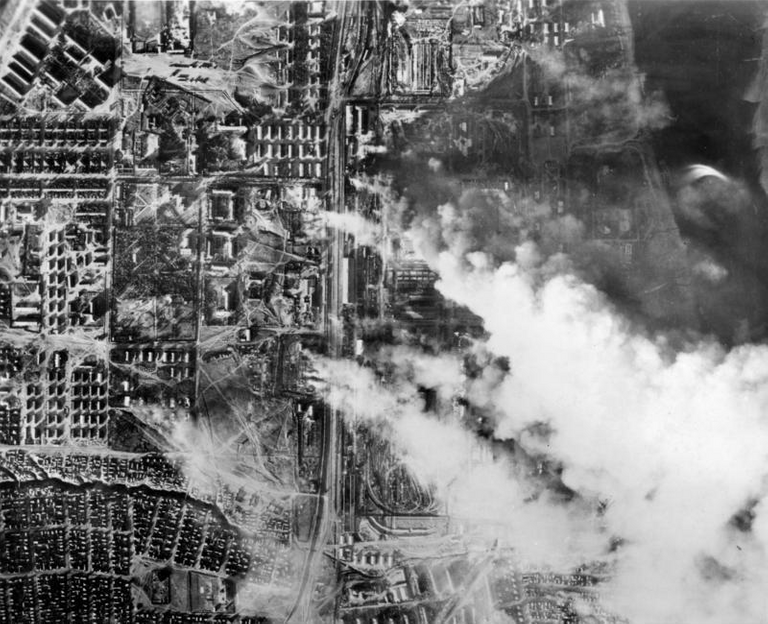
Los alemanes a pesar que tenían mayor control de la ciudad no podían avanzar rápidamente contra los focos de resistencia que se encontraban a parte el invierno rojo les azotaba con gran fuerza y pocos suministros , que les enviaban desde Berlín en paracaídas pocas veces llegaban a manos alemanas.
Los errores logísticos que tenían los nazis para llevar a cabo la operación en un amplio frente que empezaba en el Mar Negro y terminaba en el Océano Ártico , era muy inestable y no cubría todo el frente , dichos errores ayudaron a que los soviéticos pudieran organizar un contundente contraataque para recuperar la ciudad de las manos fascistas.
El ejército rojo soviético trazó un plan para embolsar a las fuerzas alemanas que eran entre aproximadamente 250 a 300 mil soldados, en una estrategia de tipo tenaza , en la que se formarían 2 ejércitos que rodearían la ciudad por cada lado hasta llegar al otro extremo y evitar que las tropas alemanas pudieran retirarse.
En el contraataque habían 1.123.000 soldados soviéticos que atacarían con divisiones blindadas con los famosos tanques T-34 (430 aproximadamente) y divisiones de artillería que contaban con más de 1000 piezas de cañones y morteros.
La obsesión de Hitler por tomar la ciudad de Stalingrado lo llevo a tal locura de dar la orden de tomar la ciudad a cualquier costo y se le dijo a el general Friedrich Paulus que comandaba las fuerzas en esa ciudad que diera hasta su propia vida con tal de conquistar esa ciudad y a los desertores se les daría pena de muerte.
La ciudad devastada por los contantes bombardeos de la Luftwaffe y piezas de artillería de ambos bandos que se producían a cada instante , hizo que los habitantes que quedaban en la ciudad vivieran entre los escombros.
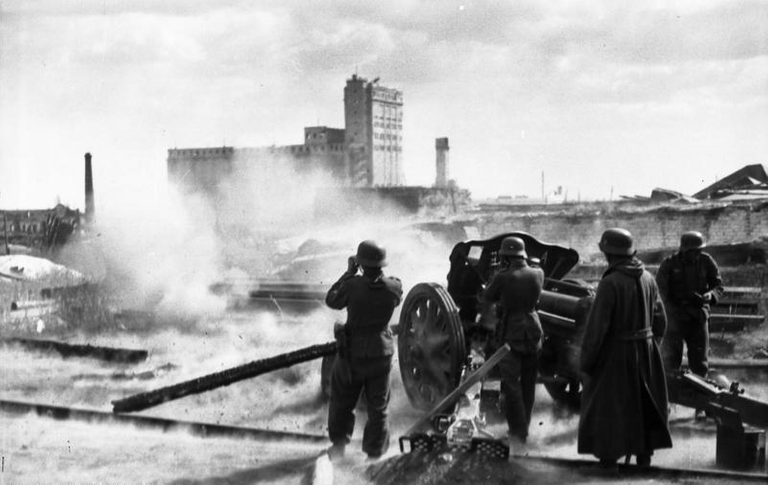
Los soviéticos tomaron el control del cielo , inhabilitaron el aeródromo alemán y el otro aeródromo mucho más pequeño e improvisado que habían construido días después también había caído, la fuerza aérea alemana estaba totalmente en desventaja.
La batalla se convirtió en una lucha de calle tras calle y casa por casa , a esto los alemanes lo llamaron "Rattenkrieg" en español "guerra de ratas", los famosos y letales franco tiradores soviéticos tenían en un invierno a los soldados de la Whermacht que hasta para buscar agua corrían el riesgo de morir por los franco tiradores que estaban escondidos entre los escombros y edificios.
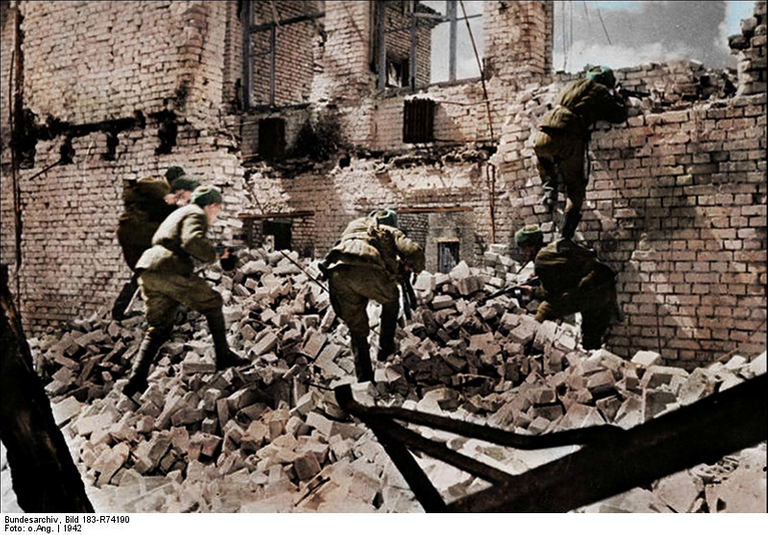
Fueron días y noches intensas entre disparos un bombardeos , los alemanes a ese infierno le decían el caldero , sin comida , poca agua , casi sin sueño y con el temor de morir , cada minuto en la ciudad estando con vida se volvía una agonía.
Con las tropas Nazis atrapadas en la ciudad se organizó un ejército de rescate y la operación se llamaría "Operación azul" , esta operación fracasó debido a que las fuerzas soviéticas estaban bien plantadas y fue imposible romper el cerco defensivo.
Con el clima , las oportunidades y la suerte en contra , al comandante Friedrich Paulus no le quedó de otra que rendirse ante el ejército soviético el 2 de febrero de 1943 con 250.000 hombres a su mando , Hitler se quedaría sin su 6to ejército de la Whermacht y parte del 4to ejército Panzer.
Curiosidades de la batalla
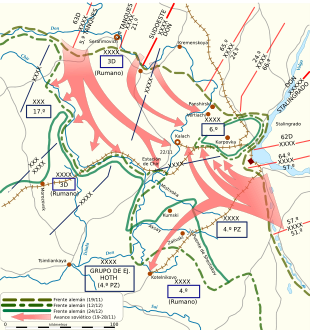
1.Con la rendición de Friedrich Paulus con las 250.000 tropas , solo 5000 lograrían sobrevivir al cautiverio y serían soltados entre 1955 y 1956.
2.La batalla de Stalingrado cobró 2 millones de vidas entre soldados de ambos bandos y civiles soviéticos.
3.El ejército de invasión de Alemania se conformaba inicialmente por 275.000 soldados alemanes y otros 100.000 repartidos entre sus aliados del Eje que eran Italia , Rumanía y Hungría, también contaban con algunos soldados croatas, ya para meses posteriores concentraban 1 millón de soldados.
4.La contra ofensiva soviética tenía 2.500.000 de soldados la cuál casi la mitad estaba en Stalingrado.
5.Tras la victoria de los soviéticos la ciudad recibió el nombre de "Ciudad heroica".
6.En la ciudad de Stalingrado , actualmente Volgogrado , se construyó la estatua de la Madre patria.
Más información:
Curiosidades de la batalla de Stalingrado
Gracias por leer este post , si te ha gustado comparte para que más gente lo vea y sin más que decir nos vemos en otra historia, saludos :D.


Welcome
Good morning, afternoon or evening dear historian, I hope you are feeling great because I will tell you a story of a battle that took the most lives of all the second world war, without further ado let's begin:
Battle of Stalingrad

The battle of Stalingrad would begin on August 23, 1942 and would finish on February 2, 1943, it was one of the battles that was carried out with the Operation Red Beard, which would be to conquer the territory of the USSR.
The huge deployment of troops of the 6th army of the German Whermacht with the 4th Panzer army would face a reorganized red army, for the control of the rich oil basins of the Caucasus, besides for Hitler the capture of that city was important, because it bore the name of the political leader Stalin and if he conquered it would have a high propaganda value.
At the beginning of the confrontations in the city the Germans controlled 75% of the city, the Germans bombed day and night the city, small Soviet resistances defended the city at all costs.

The Germans although they had greater control of the city could not advance quickly against the pockets of resistance that were found to part the red winter lashed them with great force and few supplies, which were sent from Berlin in parachutes rarely reached German hands.
The logistical errors that the Nazis had to carry out the operation in a broad front that began in the Black Sea and ended in the Arctic Ocean, was very unstable and did not cover the entire front, these errors helped the Soviets could organize a forceful counterattack to regain the city from fascist hands.
The Soviet Red Army drew up a plan to pocket the German forces that were between approximately 250 to 300 thousand soldiers, in a pincer type strategy, in which 2 armies would be formed that would surround the city on each side until reaching the other end and prevent the German troops from retreating.
In the counterattack there were 1.123.000 Soviet soldiers that would attack with armored divisions with the famous T-34 tanks (430 approximately) and artillery divisions that had more than 1000 pieces of cannons and mortars.
Hitler's obsession to take the city of Stalingrad led him to such madness to give the order to take the city at any cost and General Friedrich Paulus who commanded the forces in that city was told to give even his own life in order to conquer that city and deserters would be given the death penalty.
The city devastated by the continuous bombardments of the Luftwaffe and artillery pieces of both sides that were produced at every moment, made that the inhabitants that remained in the city lived among the rubble.

The Soviets took control of the sky, disabled the German airfield and the other much smaller and improvised airfield they had built days later had also fallen, the German air force was totally at a disadvantage.
The battle became a fight of street after street and house by house, the Germans called this "Rattenkrieg" in English "war of rats", the famous and lethal Soviet snipers had the Whermacht soldiers in a winter that even to look for water they ran the risk of dying for the snipers that were hidden among the rubble and buildings.

They were intense days and nights between shootings and bombings, the Germans called that hell the cauldron, without food, little water, almost without sleep and with the fear of dying, every minute in the city being alive became an agony.
With the Nazi troops trapped in the city, a rescue army was organized and the operation was called "Operation Blue". This operation failed because the Soviet forces were well positioned and it was impossible to break through the defensive encirclement.
With the weather, opportunities and luck against him, the commander Friedrich Paulus had no choice but to surrender to the Soviet army on February 2, 1943 with 250,000 men at his command, Hitler would be left without his 6th Whermacht Army and part of the 4th Panzer Army.
Curiosities of the battle

1.With the surrender of Friedrich Paulus with the 250,000 troops, only 5000 would manage to survive captivity and would be released between 1955 and 1956.
2.The battle of Stalingrad claimed 2 million lives among soldiers of both sides and Soviet civilians.
3.The German invasion army was initially made up of 275,000 German soldiers and another 100,000 distributed among their Axis allies which were Italy, Rumania and Hungary, they also had some Croatian soldiers, and by the following months they concentrated 1 million soldiers.
4.The Soviet counter-offensive had 2.500.000 soldiers, almost half of which were in Stalingrad.
5.After the victory of the Soviets the city received the name of "Heroic City".
6.In the city of Stalingrad, nowadays Volgograd, the statue of the Motherland was built.
More information:
Curiosities of the battle of Stalingrad
Thanks for reading this post , if you liked it share it so more people can see it and without more to say we'll see you in another story, greetings :D.

Electronic-terrorism, voice to skull and neuro monitoring on Hive and Steem. You can ignore this, but your going to wish you didnt soon. This is happening whether you believe it or not. https://ecency.com/fyrstikken/@fairandbalanced/i-am-the-only-motherfucker-on-the-internet-pointing-to-a-direct-source-for-voice-to-skull-electronic-terrorism
¡Felicidades! Esta publicación obtuvo upvote y fue compartido por @la-colmena, un proyecto de Curación Manual para la comunidad hispana de Hive que cuenta con el respaldo de @curie.
Si te gusta el trabajo que hacemos, te invitamos a darle tu voto a este comentario y a votar como testigo por Curie.
Si quieres saber más sobre nuestro proyecto, acompáñanos en Discord: La Colmena.
Congratulations @beast855! You have completed the following achievement on the Hive blockchain and have been rewarded with new badge(s) :
Your next target is to reach 2000 upvotes.
You can view your badges on your board and compare yourself to others in the Ranking
If you no longer want to receive notifications, reply to this comment with the word
STOPCheck out the last post from @hivebuzz:
Gracias @beast855 por participar en la actividad de PROMUEVE TU PUBLICACION
Nice 👍🏽
Thank you very much :D
Most welcome 😁
Mira chico. Cómo siempre interesante la narracion de los hechos. Aún no puedo comprender como el mundo permitió estos desastres.
Saludos.
Los errores de pocos causan la muerte de muchos,gracias por tu comentario :D.
La recuerdo como si fuera ayer
Muy mortífera
Excelente tu post
Excelente felicidades..!!!
Enhorabuena. Has recibido apoyo
The Creative Coin Fund.
Únete al servidor de Creative Coin y comparte tus publicaciones.
Congratulations. You have received support from The Creative Coin Fund.
Join the Creative Coin server and share your posts.
Selección manual de @jesuspsoto
|
Image by barbara-orenya
Excelente post! Muy bien informado y con contenido de valor histórico. Como dicen por ahi... Un pueblo que no conoce su pasado esta condenado a repetirlo! Felicidades